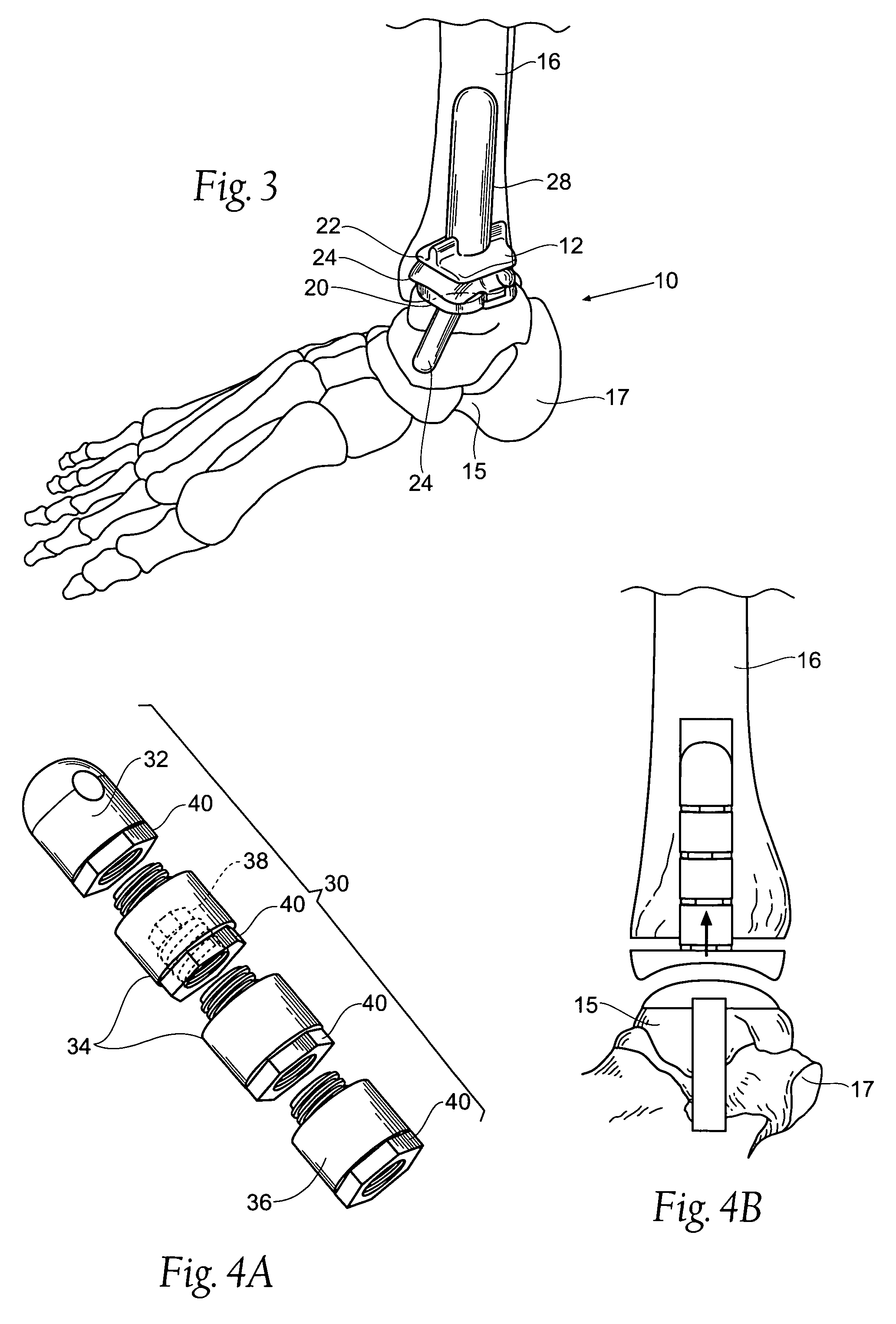Ankle replacement system
a technology for replacing prostheses and joints, applied in the field of implants and systems, can solve the problems of limited use and additional stress on the knee and hip joints, and achieve the effect of improving long-term results
- Summary
- Abstract
- Description
- Claims
- Application Information
AI Technical Summary
Benefits of technology
Problems solved by technology
Method used
Image
Examples
Embodiment Construction
[0058]This description is divided into logical sections for ease of disclosure. Section I introduces the reader to the anatomy of the lower leg and ankle, to set the anatomic backdrop of the total ankle replacement systems and methods that will be described. Section II provides structural descriptions of representative embodiments of the tibial and talar-calcaneal components of total ankle replacement systems and devices that have the desired form, fit, and function. Section III provides descriptions of representative embodiments of systems, methods, and techniques useful for the implantation of total ankle replacement systems and devices to achieve their desired form, fit, and function.
[0059]Although the disclosure hereof is detailed and exact to enable those skilled in the art to practice the invention, the physical embodiments herein disclosed merely exemplify the invention, which may be embodied in other specific structure. While the preferred embodiment has been described, the ...
PUM
| Property | Measurement | Unit |
|---|---|---|
| widths | aaaaa | aaaaa |
| lengths | aaaaa | aaaaa |
| length | aaaaa | aaaaa |
Abstract
Description
Claims
Application Information
 Login to View More
Login to View More - R&D
- Intellectual Property
- Life Sciences
- Materials
- Tech Scout
- Unparalleled Data Quality
- Higher Quality Content
- 60% Fewer Hallucinations
Browse by: Latest US Patents, China's latest patents, Technical Efficacy Thesaurus, Application Domain, Technology Topic, Popular Technical Reports.
© 2025 PatSnap. All rights reserved.Legal|Privacy policy|Modern Slavery Act Transparency Statement|Sitemap|About US| Contact US: help@patsnap.com



